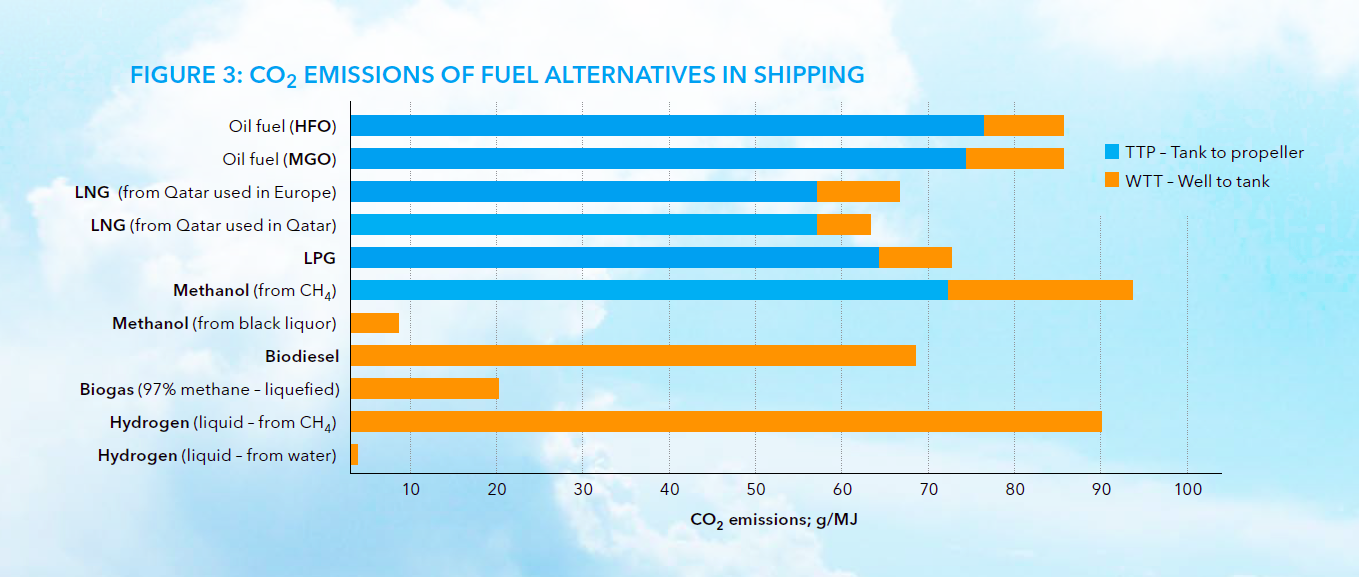DNV GL Releases Review of Marine Fuel Alternatives
Class society DNV GL has published an up-to-date assessment of the most promising alternative marine fuels available today. The study is timely, as the 2020 fuel sulfur cap is fast approaching and the IMO has just decided to aim for a 50 percent cut in shipping's carbon emissions.
The paper examines the prospects for the full range of alternatives - LNG, LPG, methanol, biofuel, hydrogen, fuel cells, wind and battery technologies - and it compares them to the use of conventional fuel, both with scrubbers and without. It is primarily aimed at helping shipowners understand their compliance options for the approaching sulfur cap, but it also includes a detailed breakdown of the carbon emissions profile of each fuel and propulsion technology.
Over the short term, the paper predicts that the vast majority of vessels in service today will either switch to low sulfur conventional fuels or install a scrubber system while continuing to use heavy fuel oil (HFO). DNV GL notes that because of the limited availability of scrubber installations, at most about 4,000 vessels will be using the technology in 2020. This raises
the question of whether the high-sulfur fuel that scrubber-equipped vessels are designed to consume will remain available, given the small size of the market.
CO2 profiles
DNV GL's compilation of the carbon profiles of fuel alternatives is particularly timely, as the industry is discussing its options in the wake of the MEPC's agreement on a CO2 reduction target.
Among the proposed alternative fuels for shipping, DNV GL identified LNG, LPG, methanol, biofuel and hydrogen as the most promising solutions. Among the new technologies, the class society believes battery systems, fuel cell systems and wind-assisted propulsion have reasonable potential.
LNG appears particularly promising as a practical solution, with a combination of low fuel cost and modest greenhouse gas emissions reductions (assuming that methane slip and supply chain methane emissions are well-controlled). It has the smallest carbon footprint of any fossil fuel option, and it is a widely-produced industrial commodity, which eases concerns about availability. “LNG has already overcome the barriers related to international legislation and is available in sufficient quantities today to meet the requirements of the shipping industry for many years. It also fits within the trend of demands to lower emissions of CO2, NOx and particulate matter," said Gerd Würsig, DNV GL's business director for alternative fueled ships.


that matters most
Get the latest maritime news delivered to your inbox daily.
According to DNV GL's assessment, the most carbon-intensive marine fuels available today are methanol derived from methane, with net CO2 emissions potentially higher than heavy fuel oil; and hydrogen derived from methane, which also may generate more CO2 than conventional bunkers. These findings rest upon a "well-to-propeller" analysis examining the entire supply chain, not just the emissions generated on board the ship (illustration above).
Hydrogen from electrolysis was by far the cleanest fuel option examined, and it offers a nearly emissions-free alternative (assuming a renewable source of electricity). However, DNV GL also identified it as among the most expensive options. "When hydrogen is produced using renewable energy, it can be assumed to be much more expensive than Brent crude oil. It would only be competitive under the assumption of massive subsidies, or of heavy taxes on conventional fuels," DNV GL concluded.
